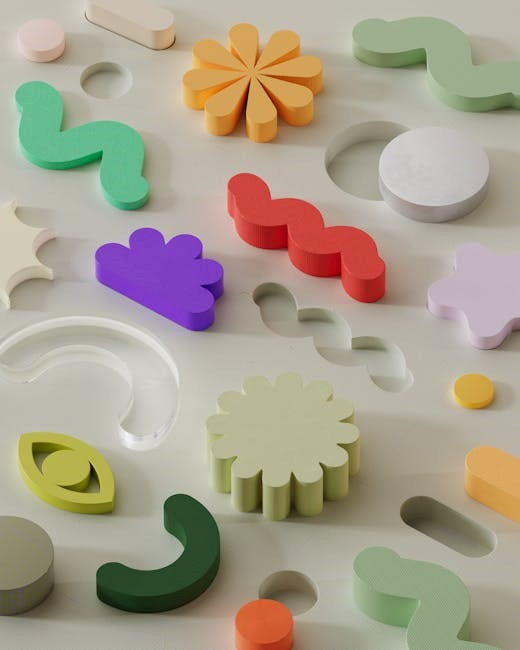
sensory profile pdf
The Sensory Profile PDF is a tool used to understand sensory processing patterns, completed by caregivers and teachers, providing valuable insights into a child’s sensory needs and behaviors in everyday situations and environments naturally.
Definition and Purpose of Sensory Profile
The Sensory Profile is defined as a standardized assessment tool used to identify and understand an individual’s sensory processing patterns and how they impact daily life and functional performance. The purpose of the Sensory Profile is to provide a comprehensive understanding of an individual’s sensory strengths and challenges, and to inform diagnostic and intervention planning.
The Sensory Profile is designed to be completed by caregivers, teachers, or other individuals who are familiar with the child’s behavior and sensory processing patterns. The assessment tool consists of a series of questions and rating scales that evaluate an individual’s responses to various sensory experiences and environments.
By using the Sensory Profile, healthcare professionals and educators can gain a better understanding of an individual’s sensory needs and develop targeted strategies to support their sensory integration and overall well-being. The Sensory Profile is an essential tool for identifying and addressing sensory processing difficulties, and for promoting optimal sensory integration and functional performance in individuals with sensory processing challenges.
Types of Sensory Profiles
There are various types of sensory profiles, including adolescent and adult profiles, each assessing sensory processing patterns and effects on functional performance naturally.
Adolescent/Adult Sensory Profile
The Adolescent/Adult Sensory Profile is a comprehensive assessment tool used to measure sensory processing patterns and their effects on functional performance in individuals from adolescence to adulthood. This profile is designed to help individuals understand how they process sensory information and how it impacts their daily lives. The assessment is typically completed by the individual themselves, with questions focusing on how they generally respond to various sensations and experiences. The results of the Adolescent/Adult Sensory Profile can provide valuable insights into an individual’s sensory processing strengths and challenges, and can be used to inform strategies for improving functional performance and overall well-being. The profile is often used in clinical and therapeutic settings, and can be a useful tool for individuals with sensory processing difficulties or other related conditions. By completing the Adolescent/Adult Sensory Profile, individuals can gain a better understanding of their sensory processing patterns and develop more effective coping strategies. This can lead to improved daily functioning and a better quality of life. The profile is a useful resource for individuals, clinicians, and researchers alike.

Assessment and Evaluation
Standardized forms are completed by caregivers and teachers to assess sensory processing patterns and evaluate functional performance naturally.
Sensory Profile 2 Assessment
The Sensory Profile 2 assessment is a standardized tool used to evaluate sensory processing patterns in children. This assessment is typically completed by caregivers and teachers who have observed the child’s behavior in various everyday situations. The Sensory Profile 2 assessment provides a comprehensive understanding of a child’s sensory processing strengths and challenges, which can inform diagnosis and intervention planning. The assessment includes a questionnaire with items that describe different sensory processing behaviors, such as responses to sensory stimuli, sensory seeking or avoiding behaviors, and emotional regulation. The results of the assessment can be used to develop targeted interventions to support the child’s sensory processing needs. By using the Sensory Profile 2 assessment, healthcare professionals and educators can gain a better understanding of a child’s sensory processing patterns and develop effective strategies to support their overall development and well-being. The assessment is an essential tool for identifying sensory processing patterns and developing personalized intervention plans.

Scoring and Interpretation
Scoring the Sensory Profile Questionnaire
The Sensory Profile Questionnaire is a 125-item assessment that requires careful scoring to understand a child’s sensory processing pattern. The questionnaire is completed by caregivers and teachers, providing valuable insights into a child’s sensory needs and behaviors.
To score the questionnaire, each item is rated on a scale, and the results are calculated to provide a total score. The score is then compared to a normative sample to determine the child’s sensory processing pattern.
The scoring process involves calculating totals and percentages, and interpreting the results to understand the child’s sensory strengths and weaknesses. This information can be used to develop strategies to support the child’s sensory needs and improve their overall functional performance.
Overall, scoring the Sensory Profile Questionnaire is an important step in understanding a child’s sensory needs and developing effective strategies to support their sensory development.
By using the Sensory Profile PDF, professionals can gain a deeper understanding of a child’s sensory needs and behaviors, and develop targeted interventions to support their overall functional performance.
The use of the Sensory Profile PDF can have a positive impact on a child’s daily life, improving their ability to interact with their environment and engage in everyday activities.
Overall, the Sensory Profile PDF is an important resource for professionals working with children with sensory processing difficulties, and can be used in conjunction with other assessments and interventions to provide comprehensive support.
The information provided by the Sensory Profile PDF can be used to inform treatment plans and develop strategies to support a child’s sensory development, and can be shared with parents and caregivers to ensure consistency and continuity of care.
By utilizing the Sensory Profile PDF, professionals can make a positive difference in the lives of children with sensory processing difficulties, and support their overall development and well-being.


Leave a Reply
You must be logged in to post a comment.